The first of two posts presenting photographs of the linen looms at Ballydugan Weaver’s House in the Ulster Folk & Transport Museum, Northern Ireland.
This post deals with the ‘plain loom’, the second post with the ‘damask loom’.
.
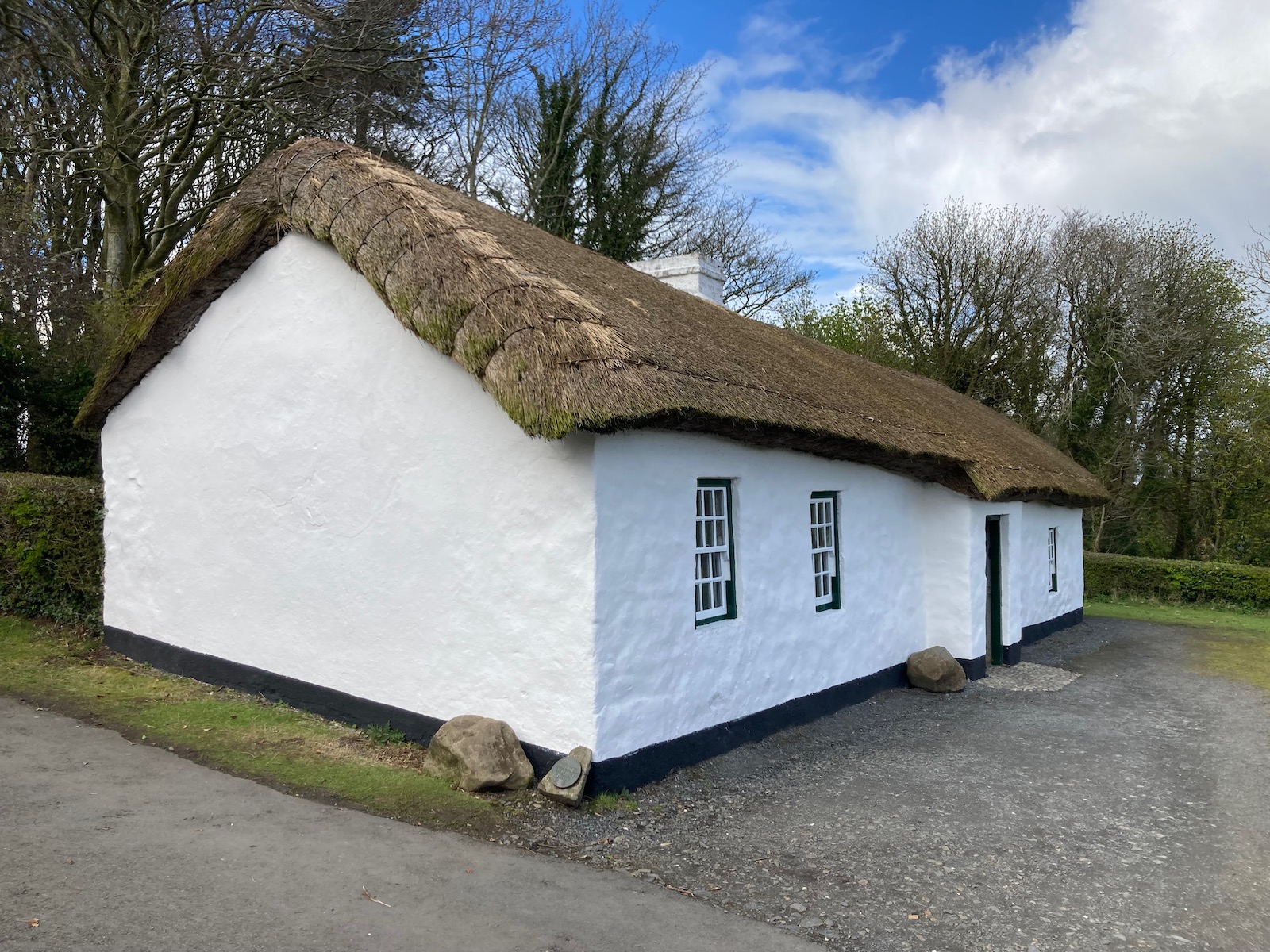
Ballydugan Weaver’s House is a reconstruction of an 1850s weaver’s cottage from Ballydugan, County Down. It currently houses two working linen looms, both dating from around 1900. The two looms are similar in size and construction. Both have previously been fitted with Jacquard mechanisms, but one is currently set up for plain weaving with the Jacquard harness removed. The other is set up for damask weaving. In these posts I refer to them as the Plain Loom and the Damask Loom (see next post).
I visited in April 2023 to look at details of loom construction to inform my own loom build later in the year. I am grateful to the weavers Roisin & Joanne for welcoming me.
The Plain Loom
Both looms have the four-post frame configuration typical many old linen looms, with a post at each corner and open sides, giving easy access for adjusting the harness and dressing the warp. The frame of the ‘Plain Linen Loom’ is 1.5m wide and 1.97m long measured from the outside of the posts, and 1.78 high to the top of the top side rail. The timber appears to be pine. The posts are about 7.5cm wide and 14cm deep. The loom is braced into the roof structure for added stability. The base of the posts once sat directly on the earthen floor but have rotted and now sit on a pair of new floor plates. The treadles are set above a shallow pit in the floor.
The steel warp beam is fitted with a very large brake wheel with sixteen teeth and a large wooden pawl. The ends of the beam are supported on brackets which can be raised or lowered with an iron turnscrew. If very long warps were used it would have been be necessary to lower the beam periodically to maintain a consistent warp line. The current warp of bleached linen was wound by Fergusons of Banbridge.
The cloth beam has an iron or steel ratchet with about one hundred somewhat irregular teeth that appear to be hand-cut. The weaver advances the warp by pulling on a cord running up and down inside the right front post and over a pulley at the top. Pulling on the cord raises a lever,attached to the ratchet mechanism under the seat.
The loom is fitted with a fly-shuttle. The fly-shuttle pickers run on steel rods and are each made from a single block of apple-wood with the grain running across. Small willow branches attached to the swords operate as springs. Old rubber bicycle pedals have been repurposed and fitted on the rods to make buffers to arrest the motion of the pickers.
The batten is hung from a repurposed wooden rail spanning between the tops of the side-frames. The height of the batten can be adjusted by tightening or loosening the twisted cords which secure the swords to the rail.
There are four heddle shafts hung from coupers in the top-castle. The heddles are hand-knitted and varnished. The two treadles are pivoted at the back. There are four lamms or marches pivoted at the left. The front two lamms are tied together, as are the back two. The harness has a counterbalanced action: one treadle raises the two front shafts and sinks the back two, and the other treadle does the oppsoite.
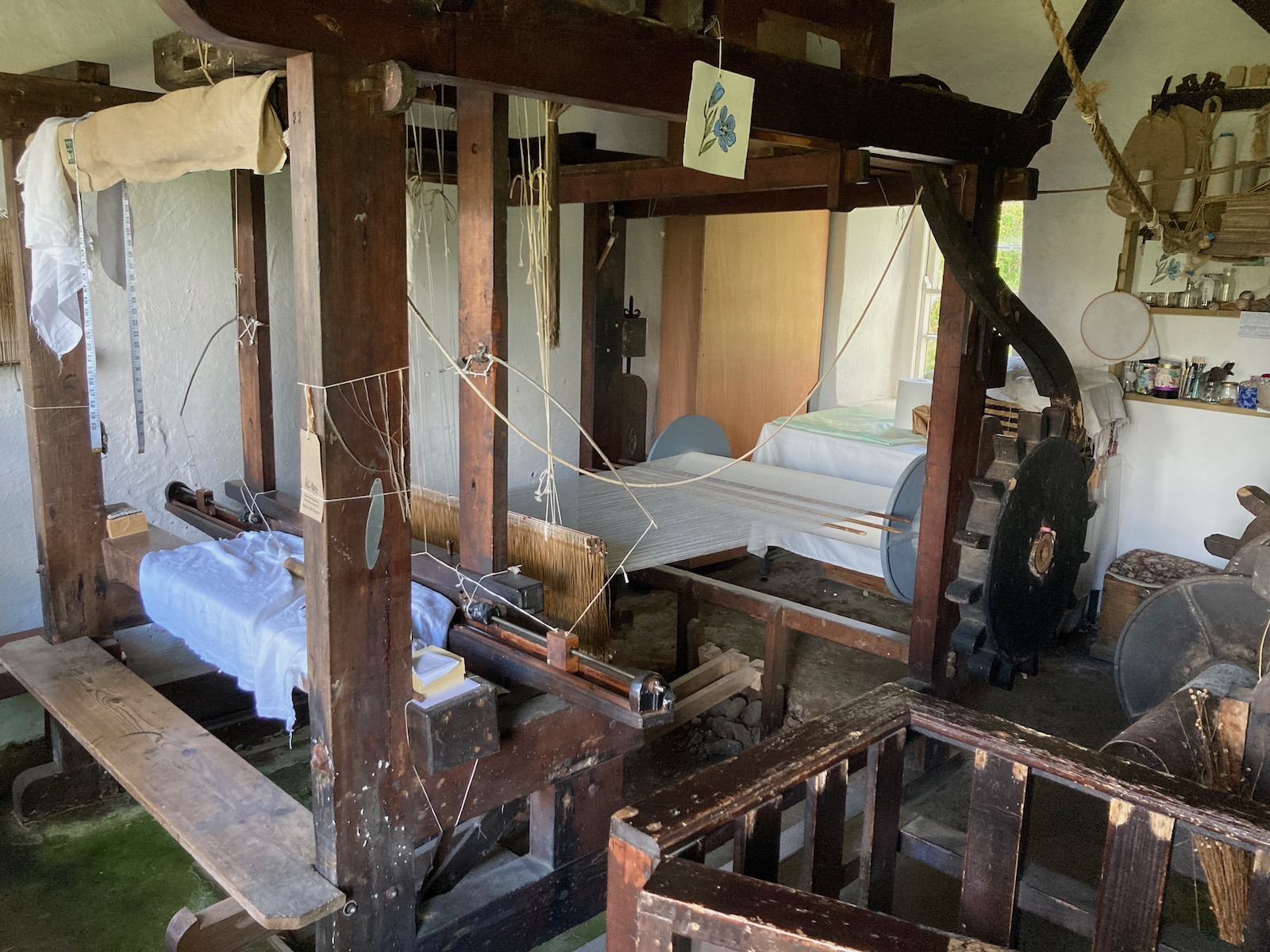
The ‘plain’ loom, general view.
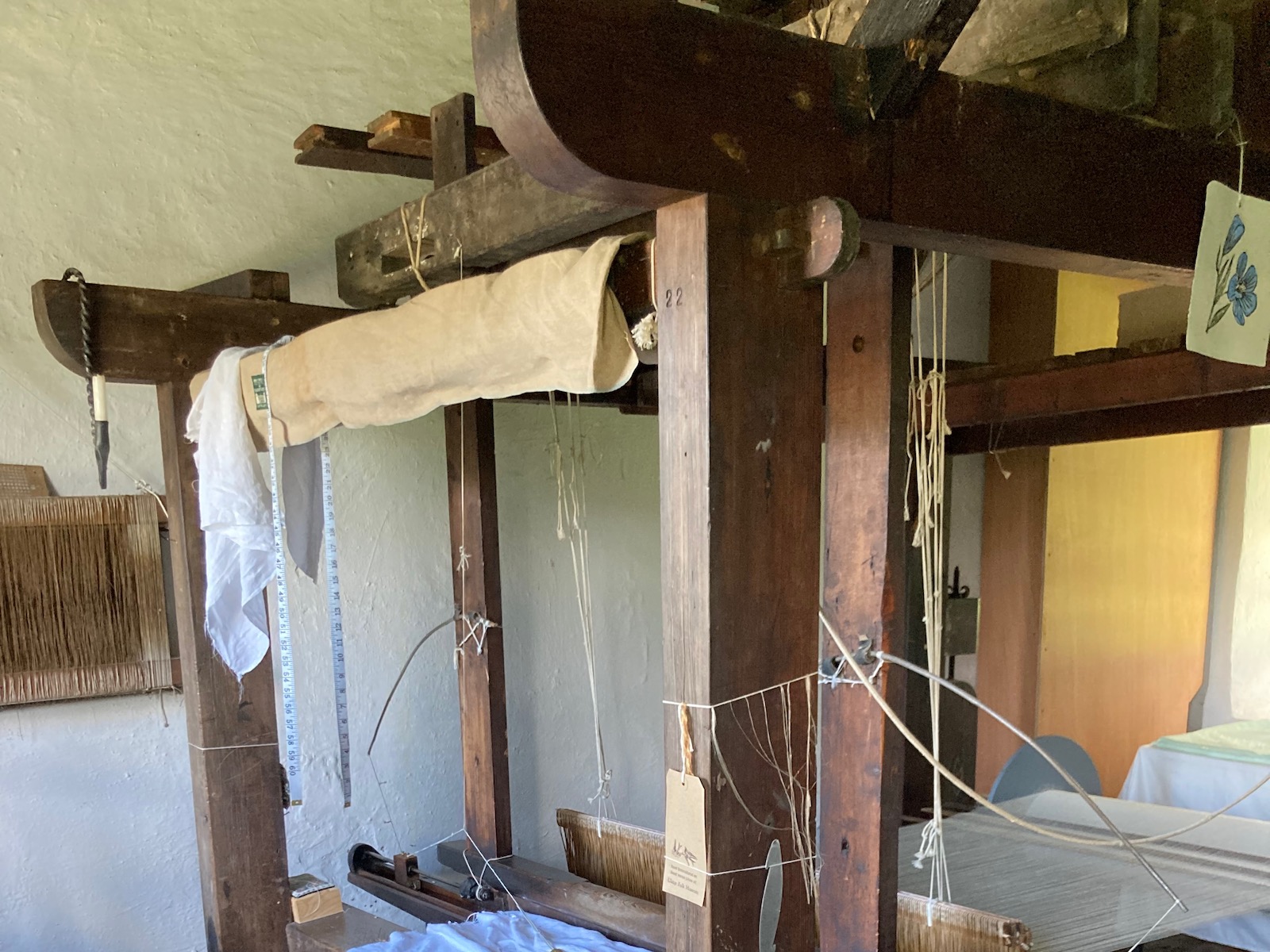
Front posts.
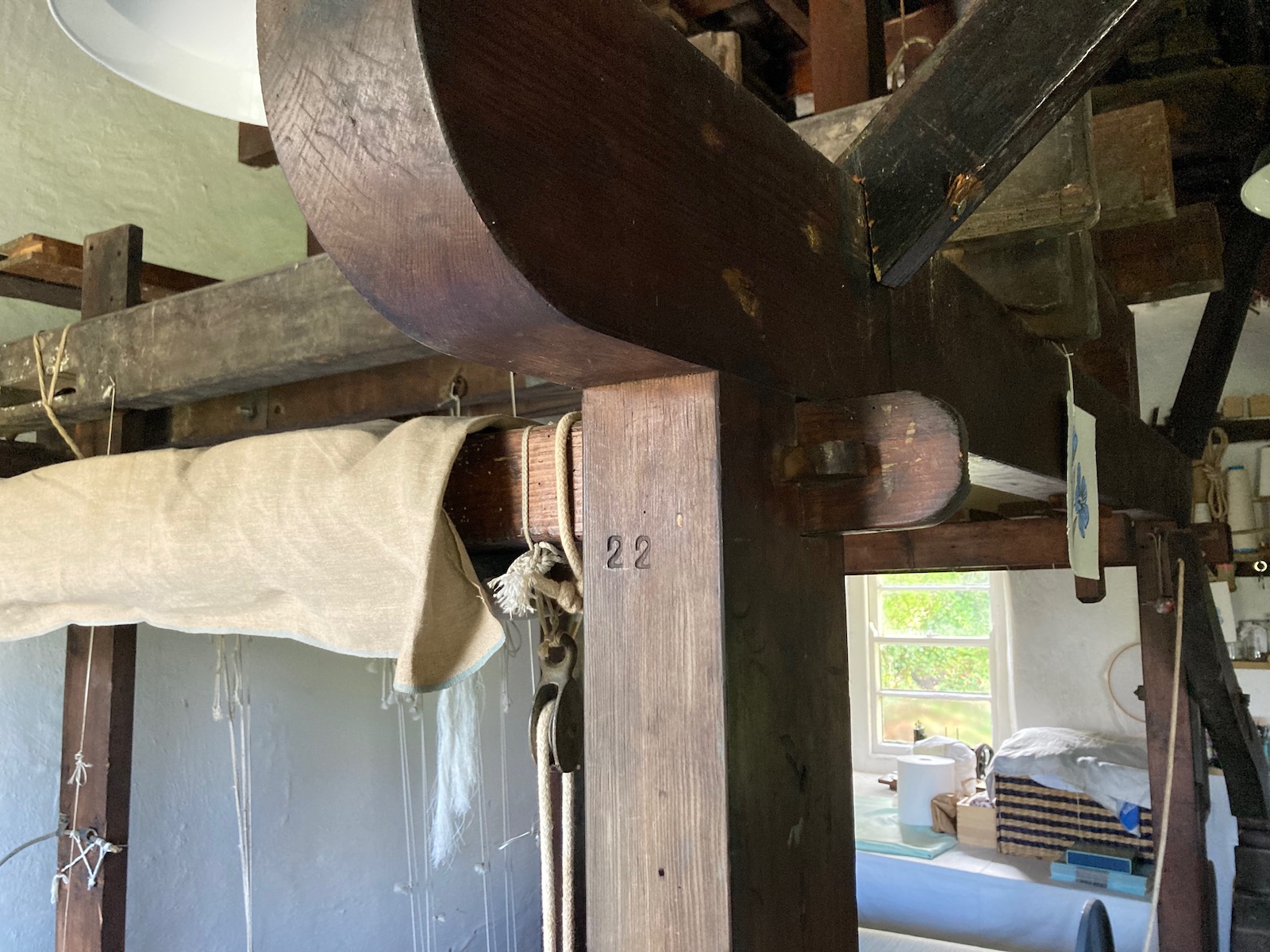
Junction of front post & top rail.
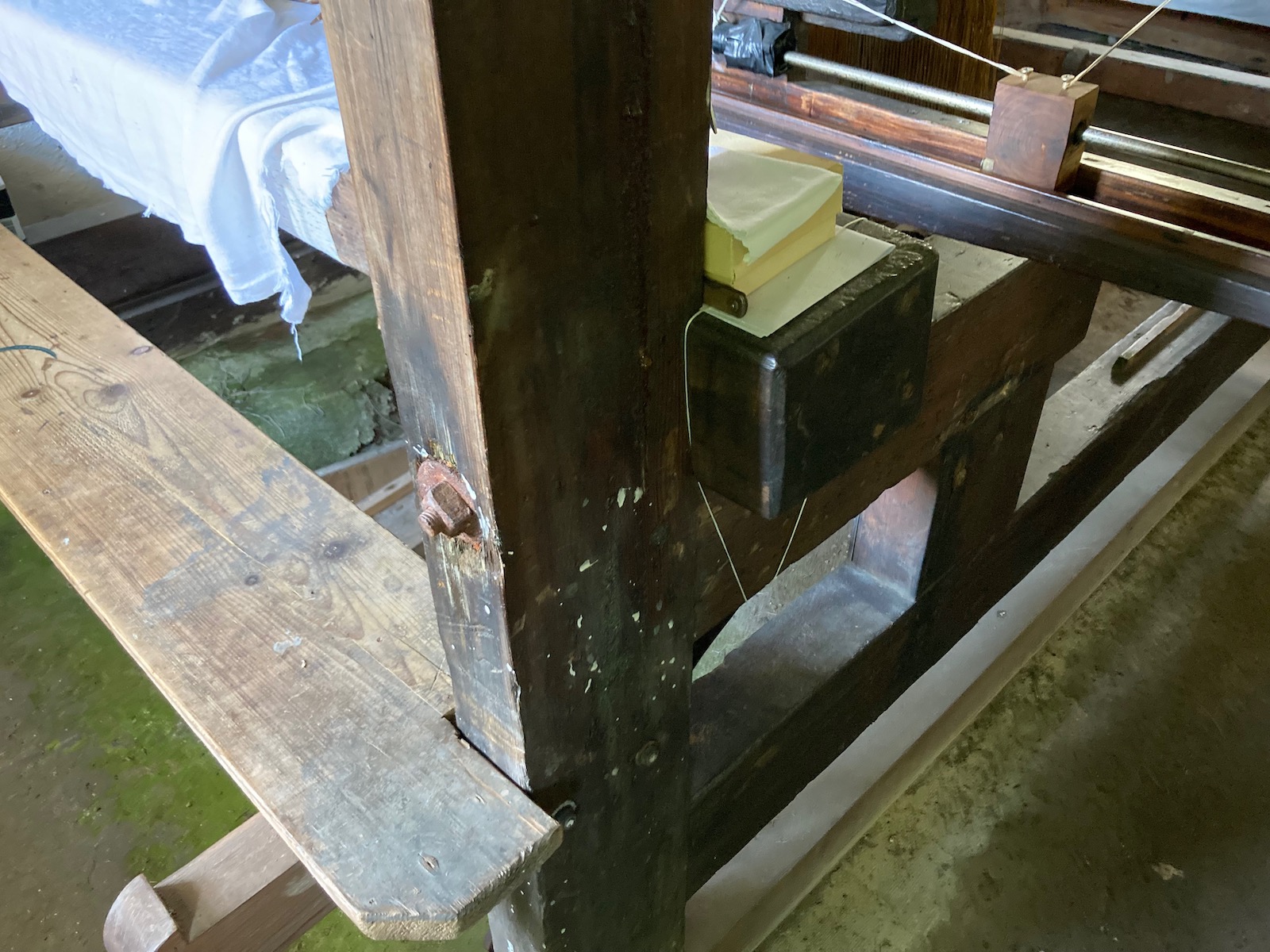
Front post, breast beam, seat.
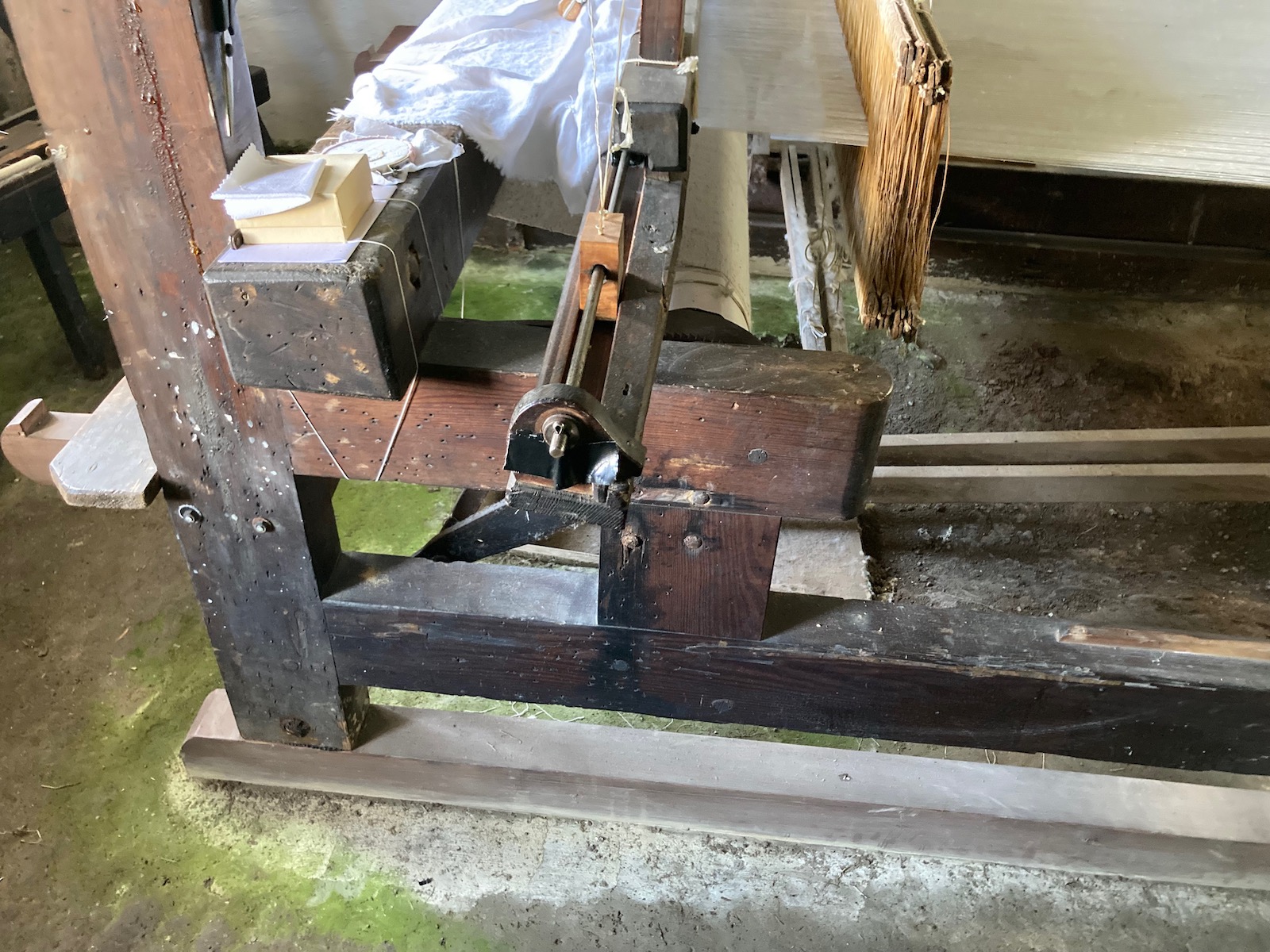
Front of loom from the side.
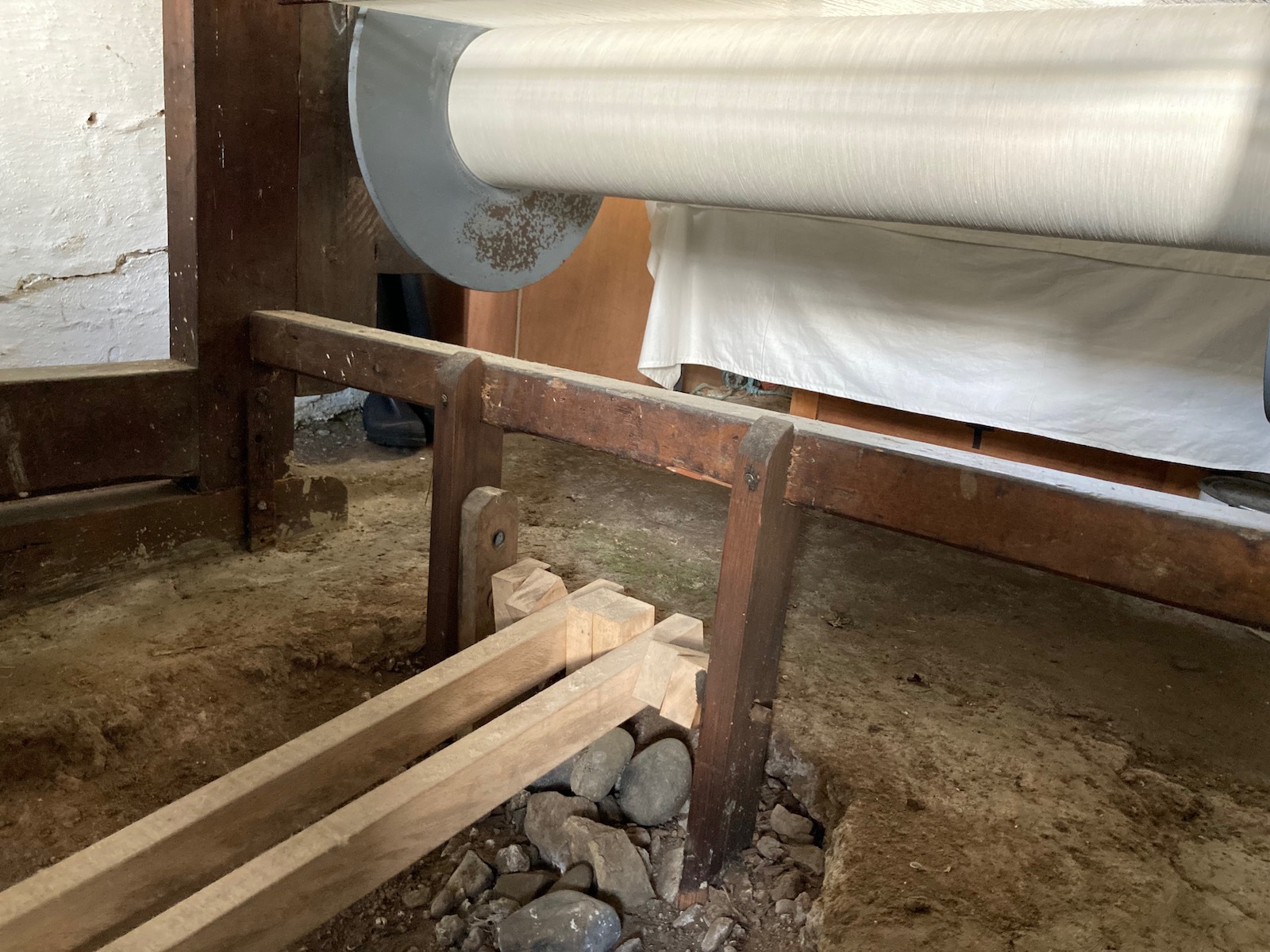
Underside of warp beam with treadle pivot over floor pit.
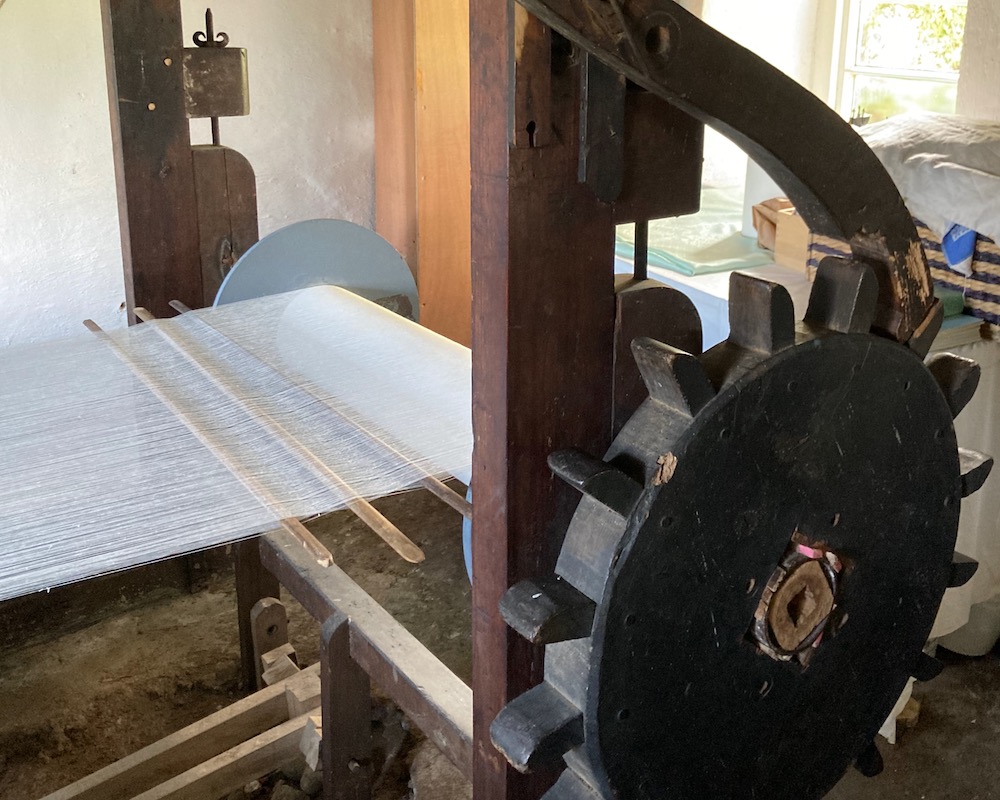
Warp beam with brake wheel.
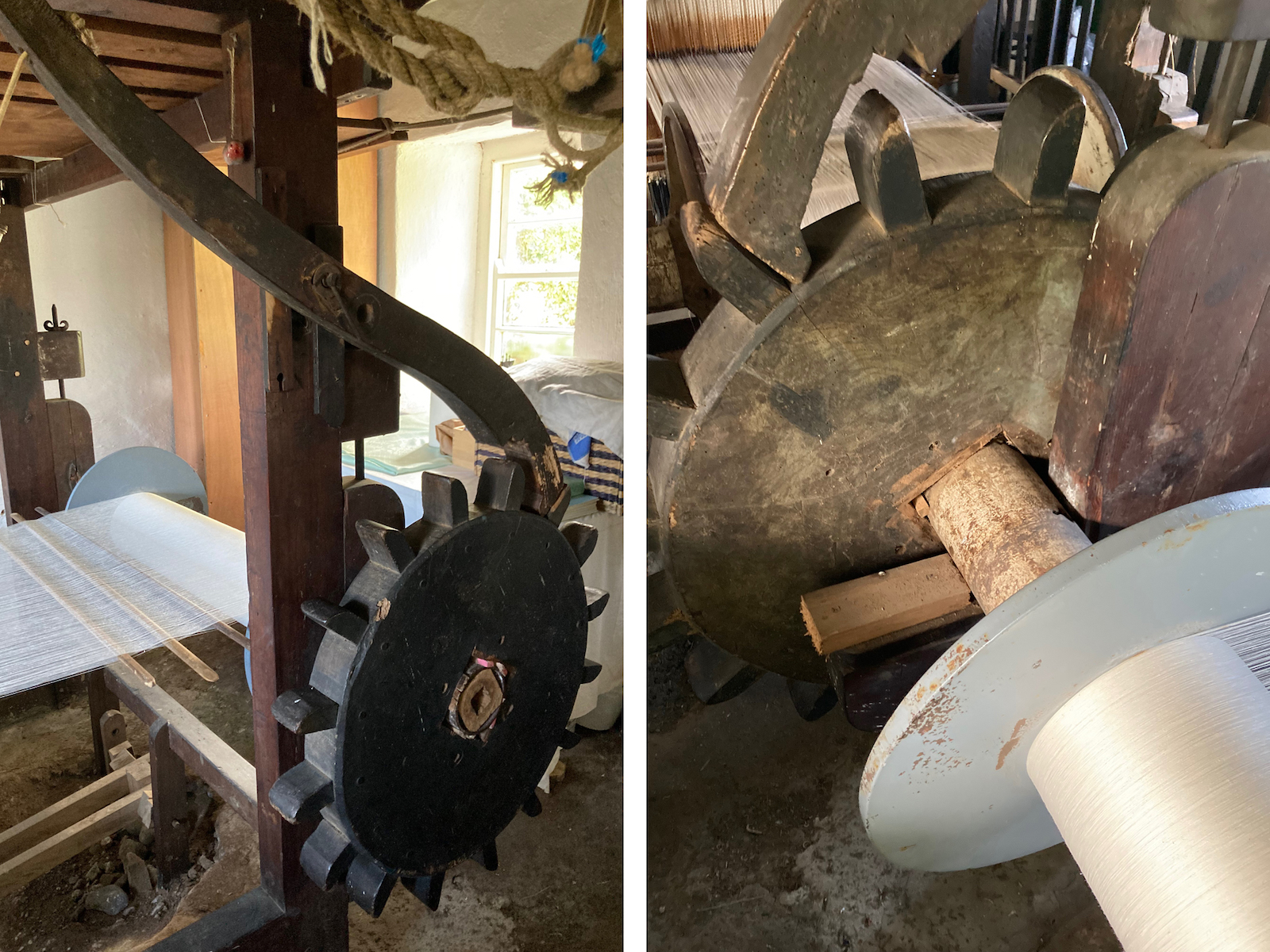
Warp beam with brake wheel.
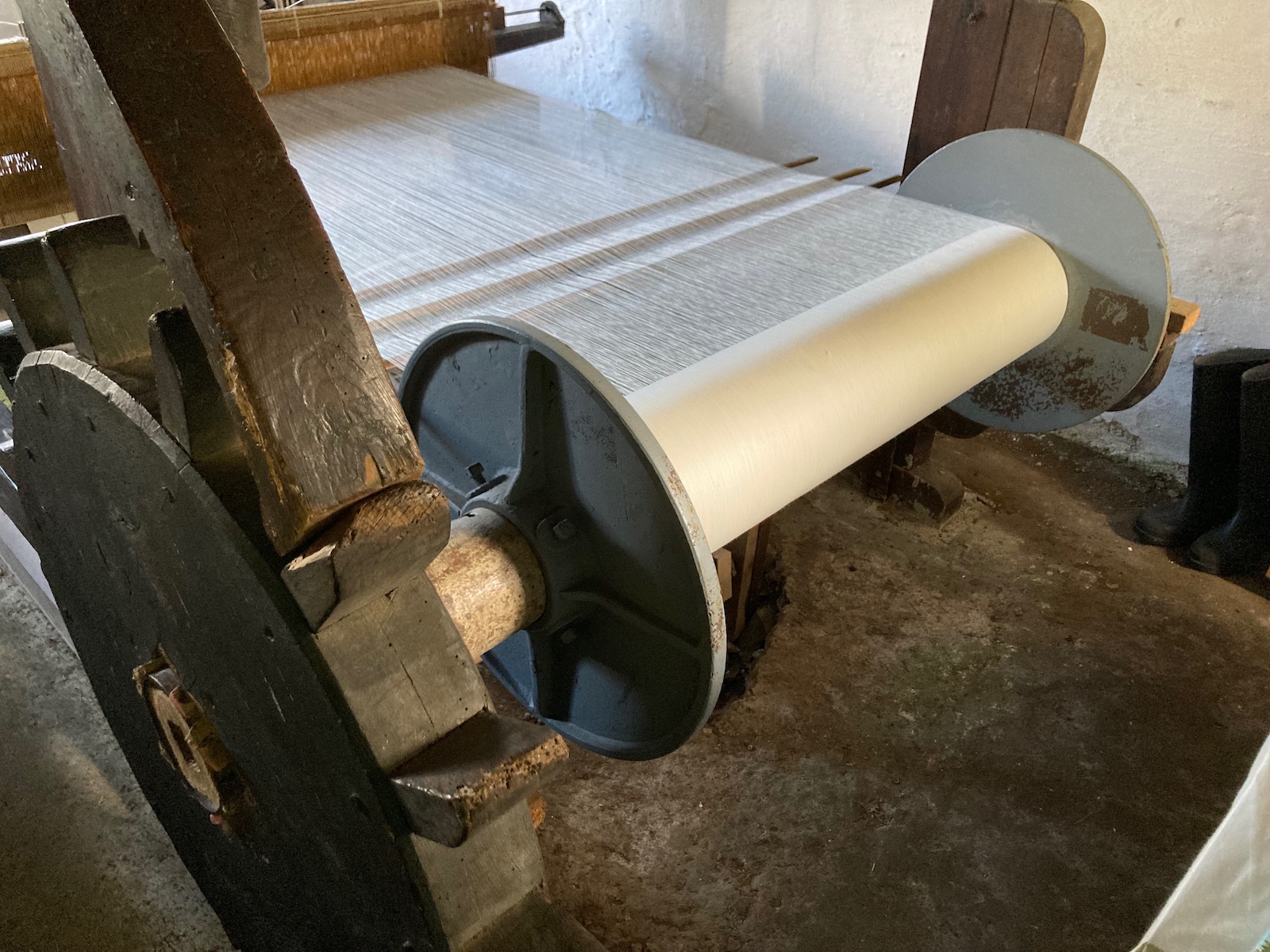
Warp beam with brake wheel.
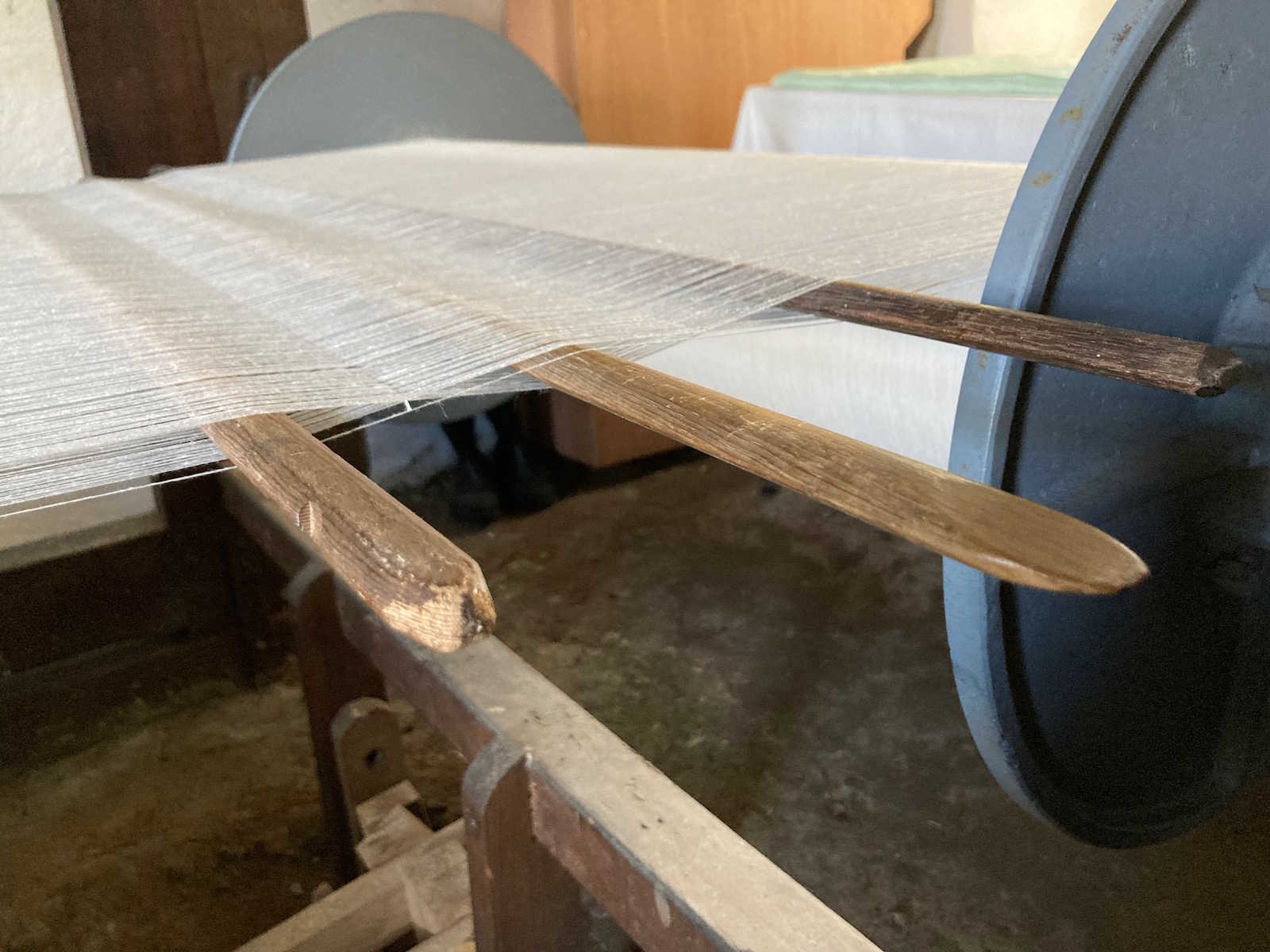
Warp with lease sticks.
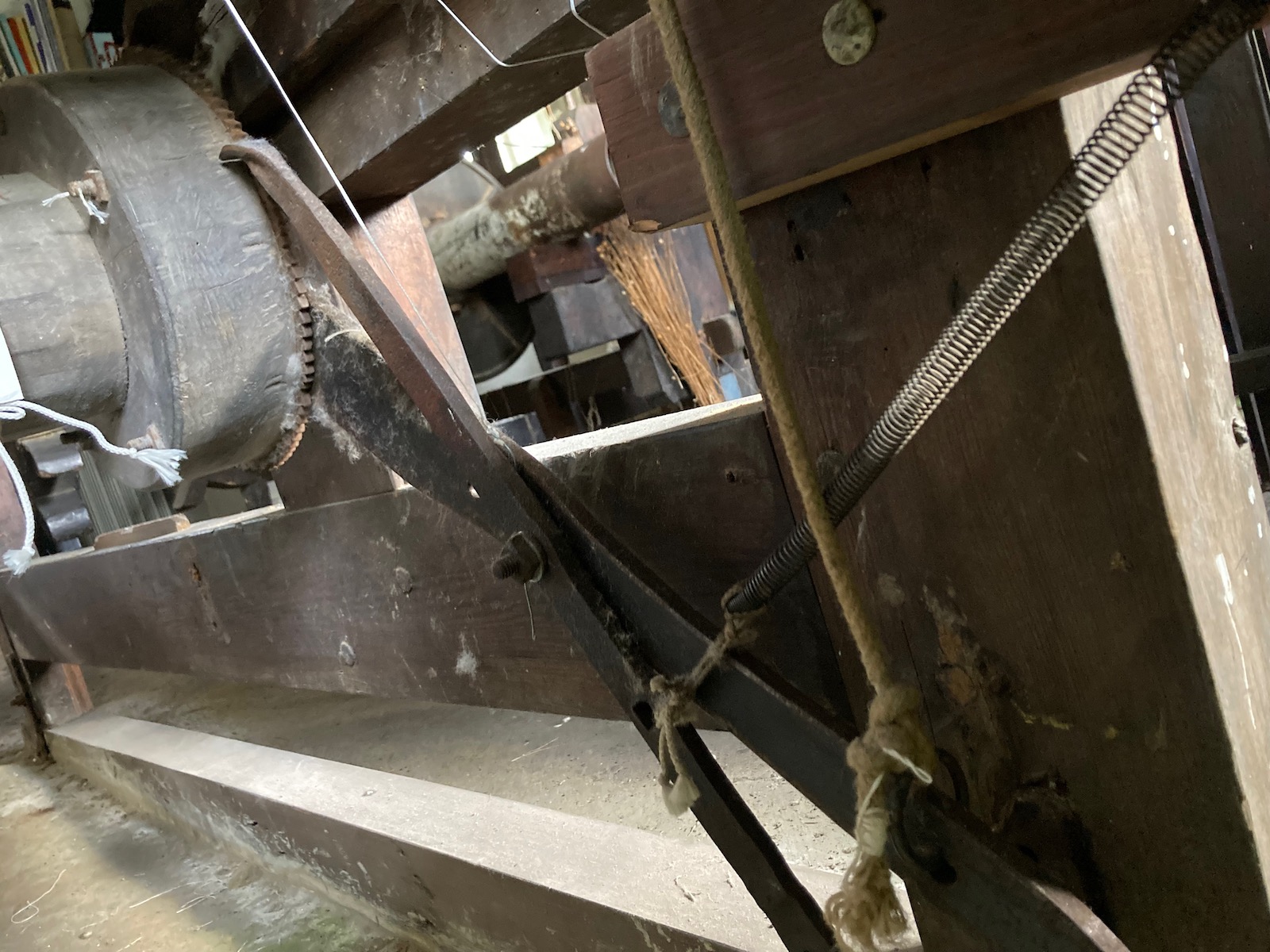
Underside of cloth beam with ratchet mechanism.
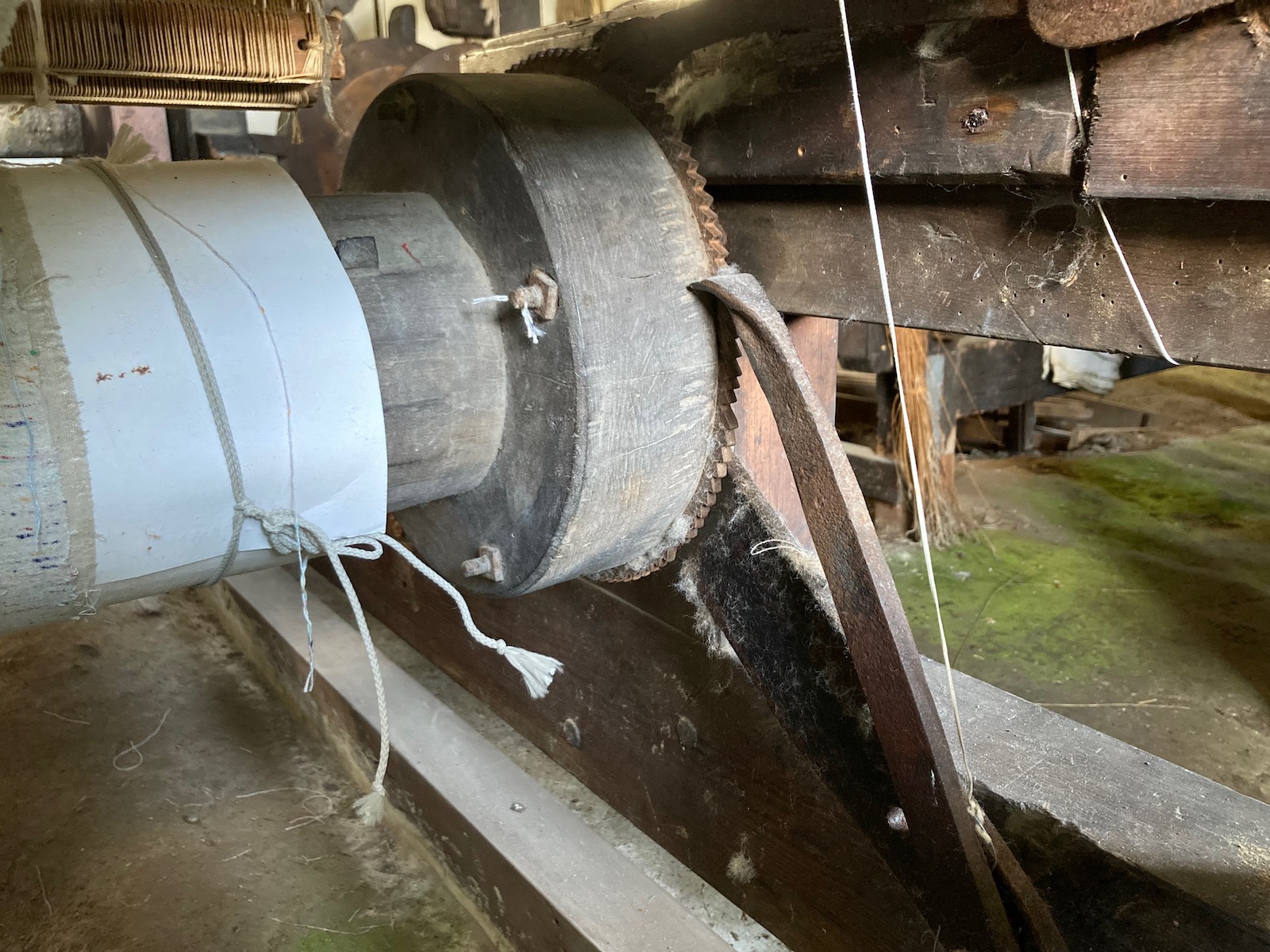
Underside of cloth beam with ratchet mechanism.
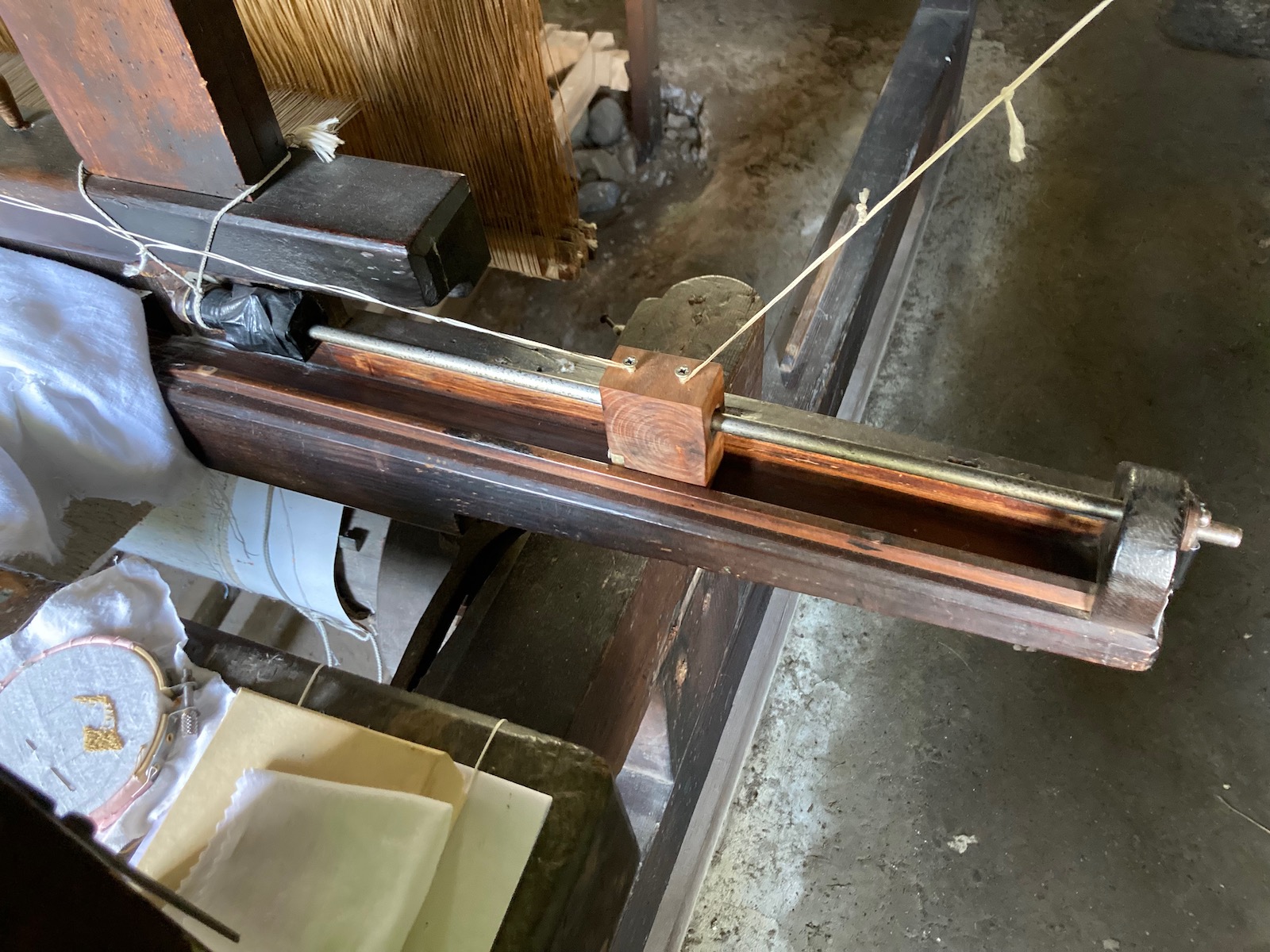
Fly-shuttle box.
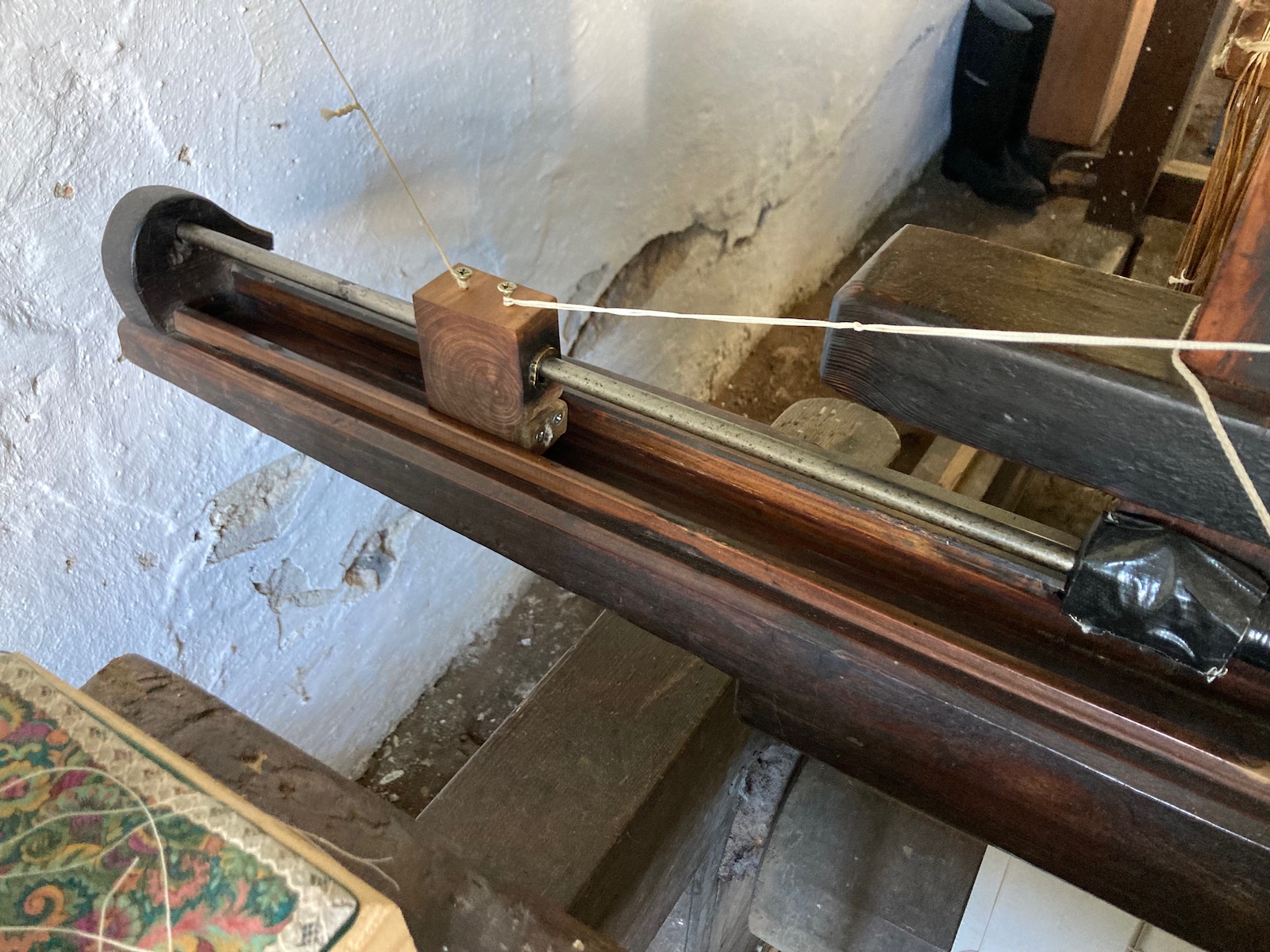
Fly-shuttle box.
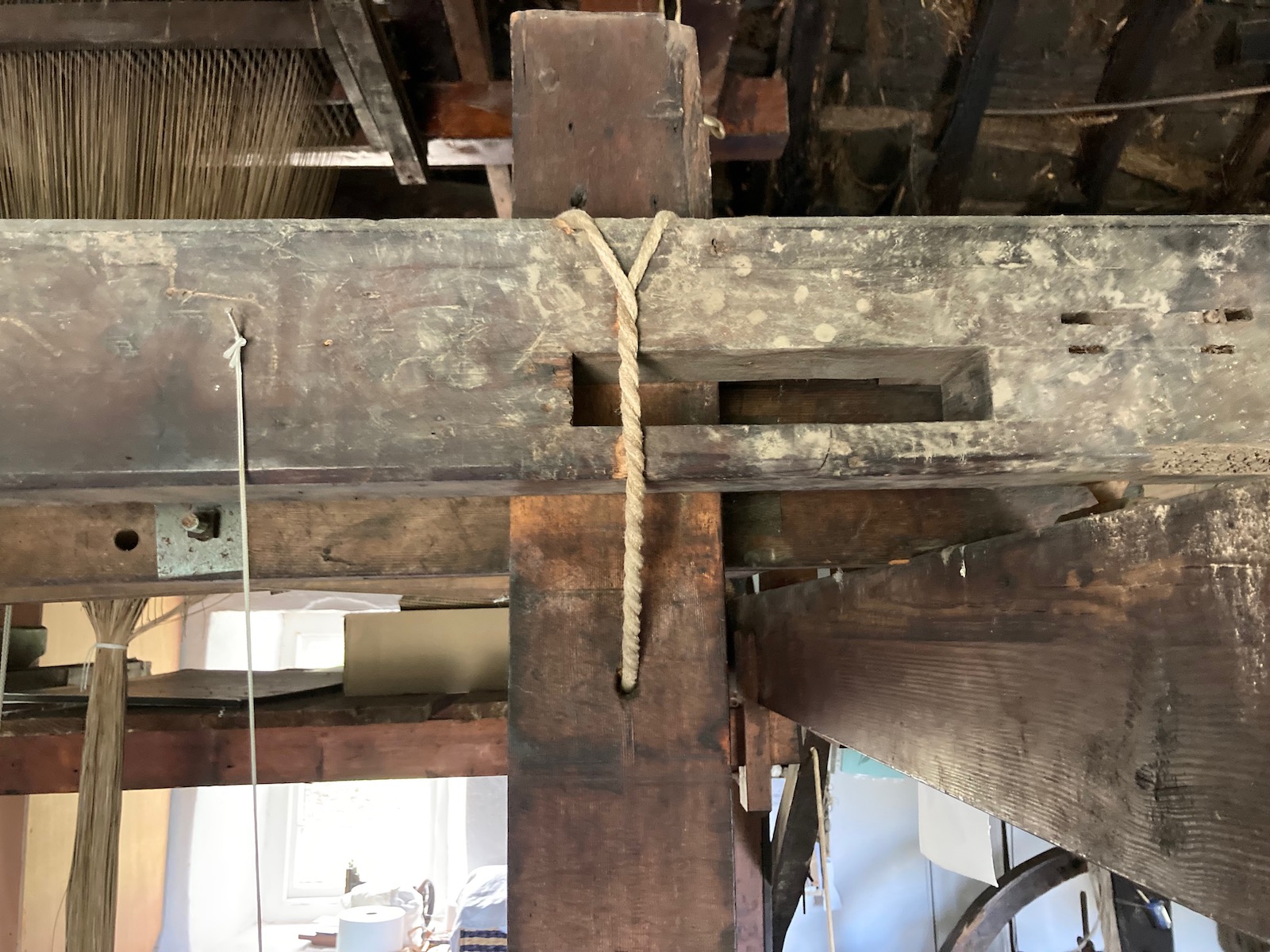
Junction of sword and rocker with twisted cord for height adjustment.

Junction of sword and rocker from the rear, with peg for twisting cord for height adjustment.
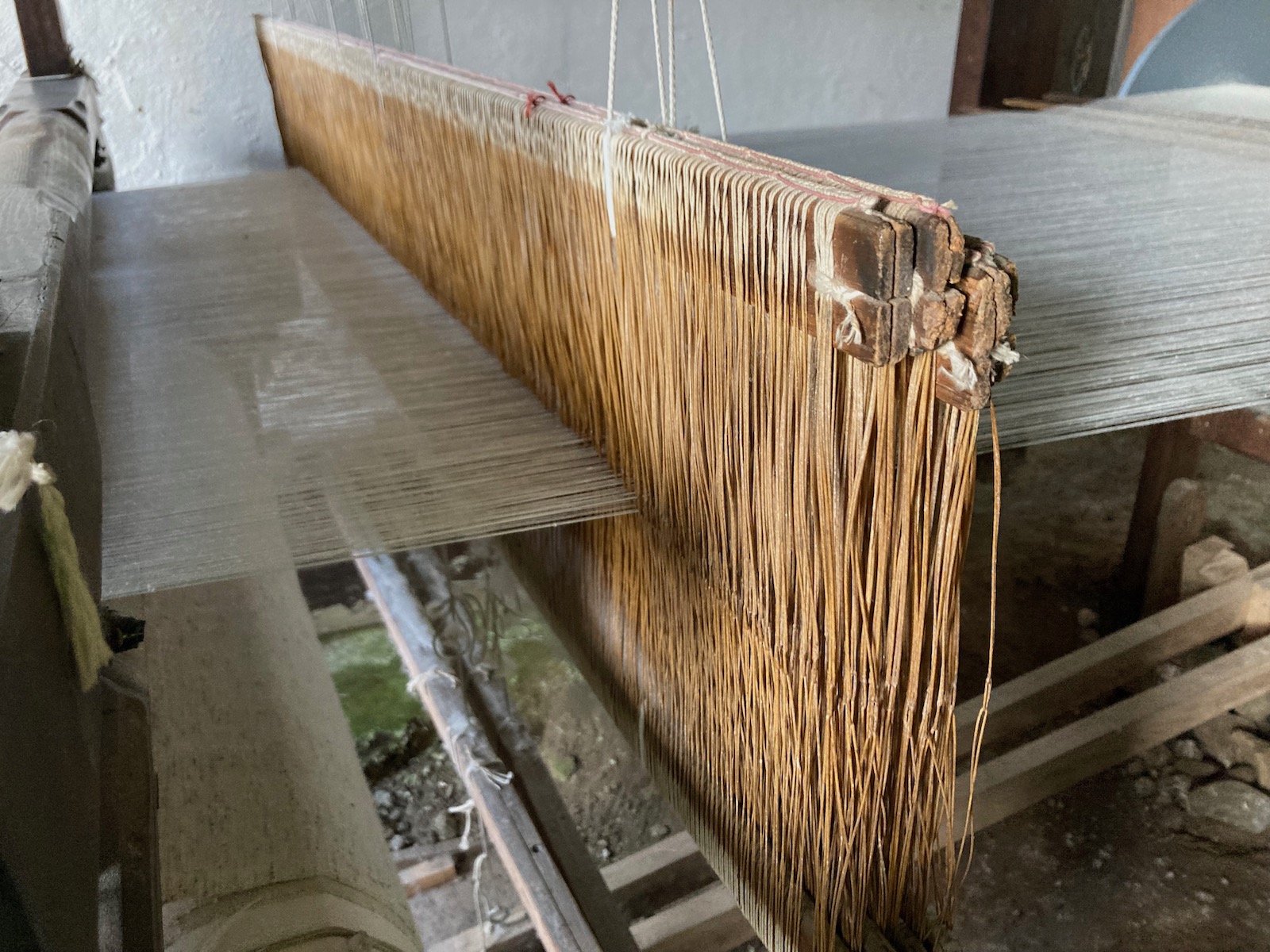
Heddle shafts.
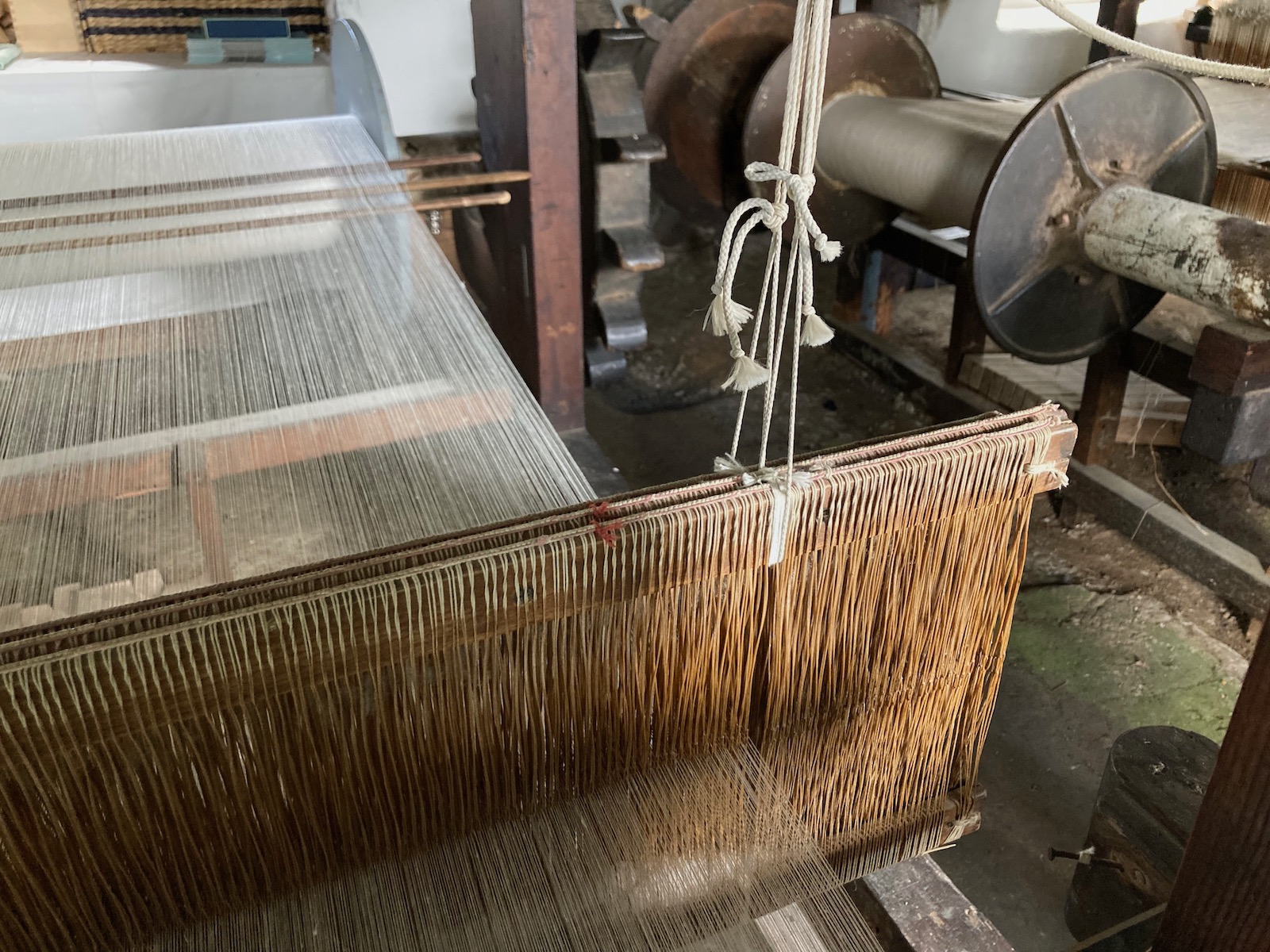
Heddle shafts.
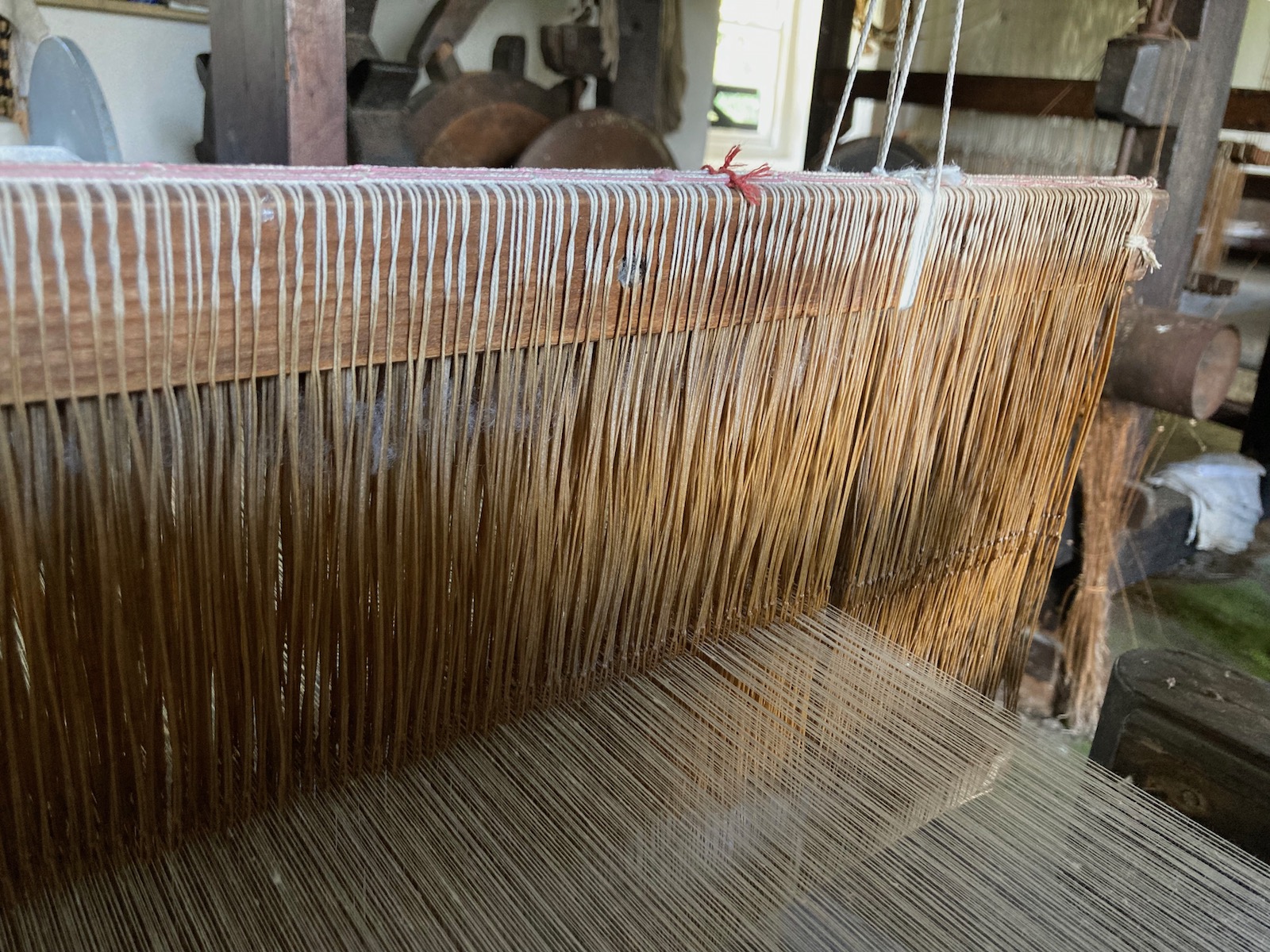
Heddle shafts.
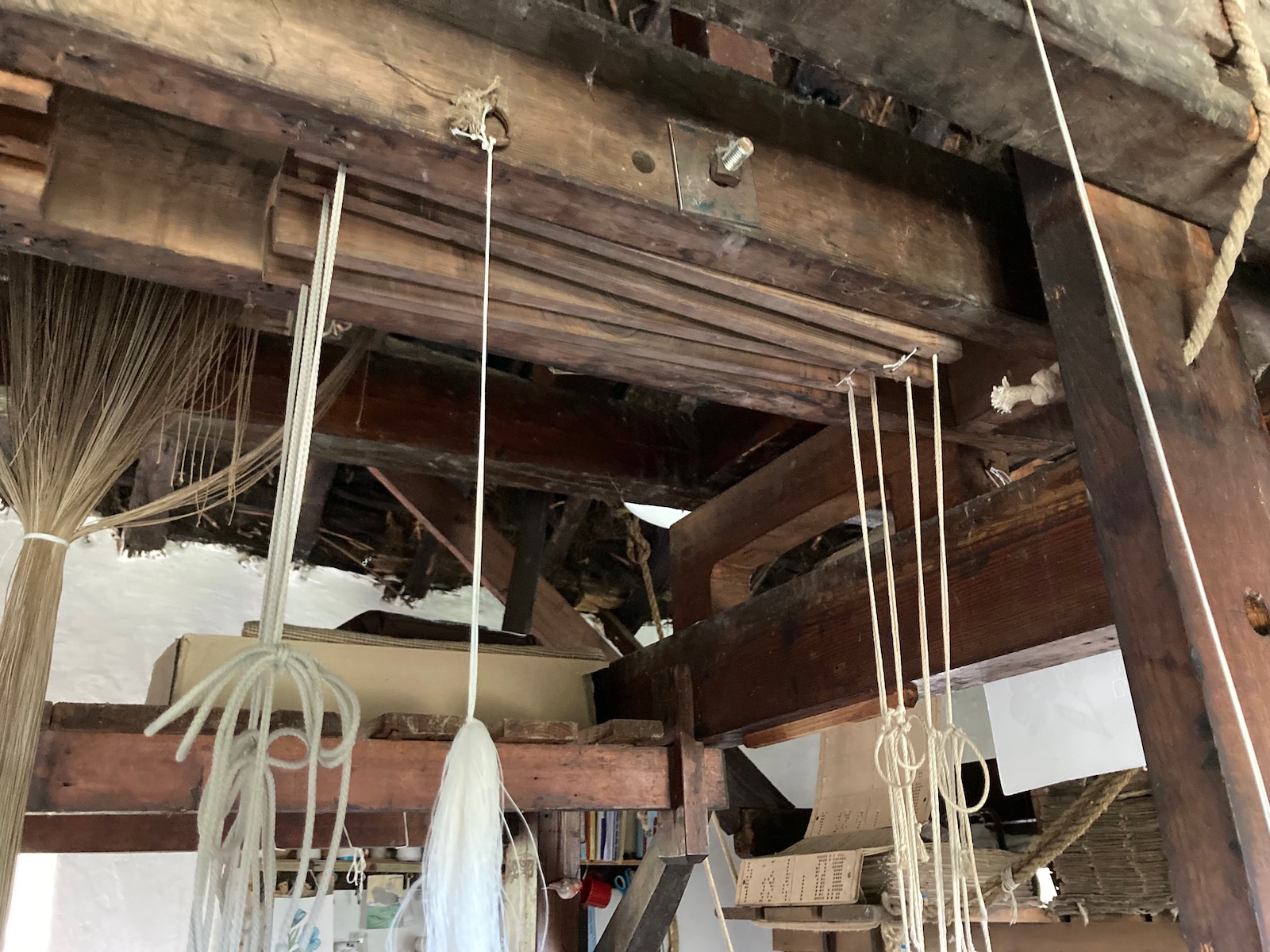
View into top-castle with coupers.